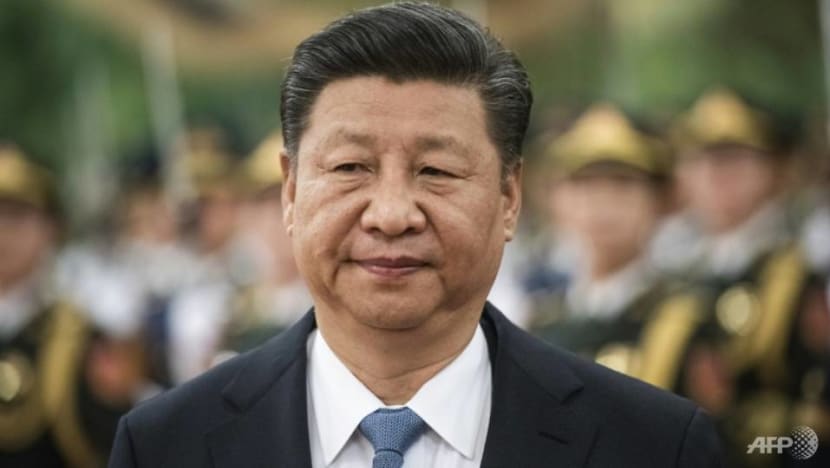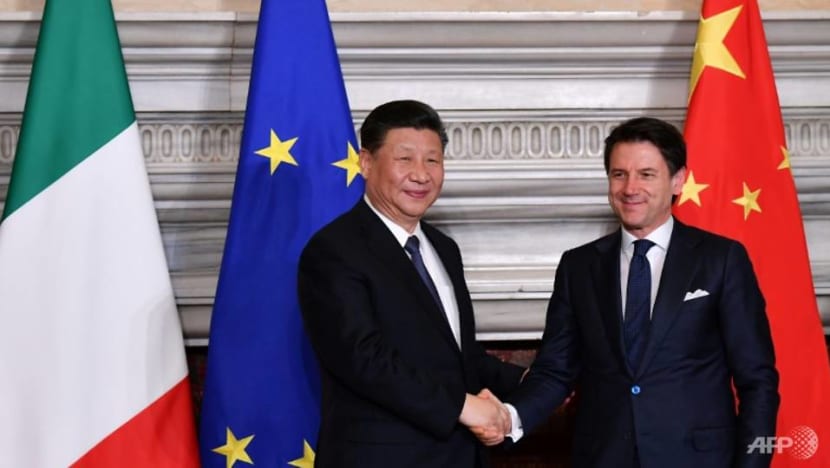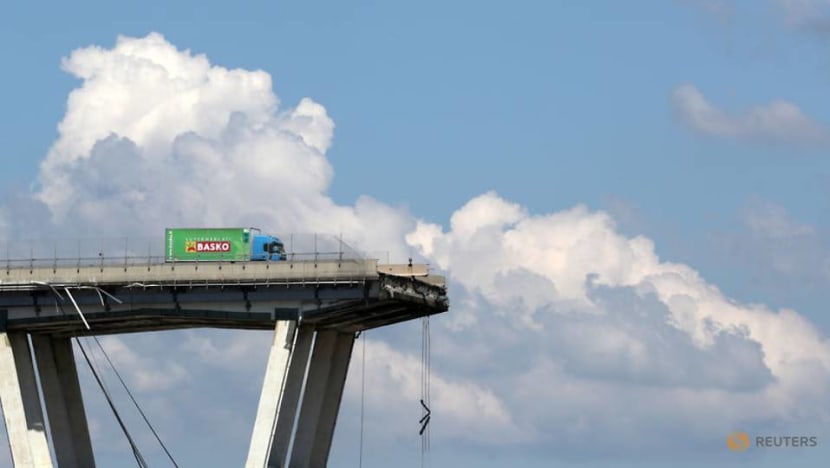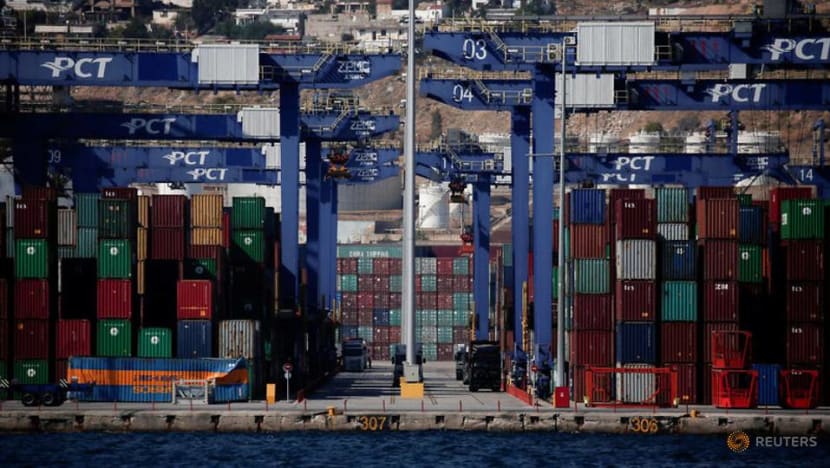commentary Commentary
Commentary: Italy takes bite of China apple with entry into Belt and Road Initiative
But Italy’s signing of a Memorandum of Understanding during President Xi Jinping’s visit does not mean the sky will fall, says Asia Pacific Connex’s Andre Wheeler.

Rome is expected to join President Xi Jinping's massive $1 trillion 'Belt and Road' infrastructure project AFP/FRED DUFOUR
SINGAPORE: With Italy becoming the first G7 country to enter a memorandum of understanding (MOU) with China and join its Belt and Road Initiative (BRI), there are claims that the sky is about to fall.
Dissent within the Italian government saw the Deputy Prime Minister, Matteo Salvini, who heads the right-wing party the League in the country’s coalition government, being conspicuously absent from official ceremonies during Chinese President Xi Jinping’s official visit to Italy last week.
He has on numerous occasions warned that he does not want to see foreign businesses "colonising" Italy. He is wary of foreign investment in the ports of Trieste or Genoa, having argued in the past that:
I would think about it not once but a hundred times.
His concerns are shared by many in the EU and G7. Despite European countries including Germany and France already enjoying significant trade with China, Italy somehow stands accused of letting the EU side down.

There are fears that China’s vision of the world runs inimical to Europe’s interests, where accusations of predatory debt financing and suspicions have plagued the BRI. So it’s no surprise both countries have sought to position this latest boost to economic cooperation as in line with history.
READ: Caution rising in China beneath the Belt and Road Initiative's shiny facade, a commentary
Marco Polo, the Venetian merchant and explorer travelled the old Silk Road in the middle ages. As Xi Jinping was quick to point to, this was part of the “first bridge” between Italy and China. But the New Silk Road is more ambitious and envisages a network of ports, railways, tunnels and other infrastructure spanning 60 countries.
WHY ITALY IS PIVOTING TOWARDS CHINA
Initial reactions to the MOU signed between Italy and China seem to ignore the fact that the document is a statement of intent to cooperate to build economic and social connections between the two countries.
It is a non-binding agreement, meaning parties are not legally obliged to abide by their terms. Similar MOUs signed by China with Latvia, New Zealand, the Cook Islands, the state government of Victoria in Australia and the UN Economic Commission for Europe (UNECE) have not faced the same level of scrutiny.
The Five Star Movement, the Eurosceptic party that came to power in Italy alongside the far-right League after elections last June, believes the agreements will revive Italy’s stagnant economy.
They argue these bring much-needed investment for the country’s ports and infrastructure and will boost exports to China.
Having been in a recession since end-2018, with one of the highest national debt levels in the Eurozone, it is no surprise the promise of Chinese investments look attractive to Italy. After all, Italy's populist government came to power in June 2018 with high-spending plans but have had to stall these due to a stand-off with the EU.
The collapse of the Genoa Morandi bridge in August 2018, which killed dozens of people, also made Italy's crumbling infrastructure a major political issue for the first time in decades and dented the longstanding myth of Italian engineering prowess.

China has also shown it is willing to demonstrate flexibility in its engagements as it seeks out better connectivity to markets in Eurasia. Their agreement with Greece has seen the tremendous transformation of Piraeus into the Mediterranean’s busiest port and the addition of thousands of jobs.
Italian ports also face stiff competition in attracting foreign direct investments from Koper (Slovenia) and Rijka (Croatia), which are also actively pursuing China investors and can offer an alternative rail/port pairing with the Adriatic/Baltic trade network.
READ: Global shipping and logistics chains reshaped as China’s Belt and Road dreams take off, a commentary
HUGE BENEFITS TO BOTH SIDES
With a commitment to a potential US$20 billion in project funds, a total of 29 deals amounting to US$2.8 billion were signed during Chinese President Xi Jinping's visit to Rome under the MOU, which provides a framework agreement for business deals between Italian and Chinese state-backed companies.
The deals include projects in energy, finance, and agricultural produce with potential for oil and gas and engineering firms entering into the Chinese market.
Of concern to EU observers is the fact that China's Communications and Construction Company will be given access to the port of Trieste to enable links to central and eastern Europe. The Chinese will also be involved in developing the port of Genoa.
READ: An Italian port dreams of being the Singapore of the Adriatic Sea, as it awakens to China’s siren call, a commentary
The two sides also agreed to cooperate with each other in other fields of environment protection and sustainable energy, agriculture, sustainable urbanisation, healthcare and aviation.
Contributing only 5 per cent of exports from the EU to China and nowhere near the top 50 destinations for Chinese capital investments, Italy hopes to arrest the trend of declining investments from China and reduce its bilateral trade deficit of US$12.1 billion in 2018.

But beyond the dollars and cents, and while the MOU brings great promise of closer economic ties and growth, what is of note is its political significance amidst tensions in a brewing US-China trade war. Its signing shows Italy and China share a vision in promoting connectivity and trade.
TRADE THROUGH THE EYES OF A BLOOD ORANGE
The simple blood orange, an item highlighted that would benefit from the trade deals inked between China and Italy, stands as an example of the benefits the BRI offers.
Citrus fruits are a sought-after product by Chinese consumers – particularly the Sicilian blood orange - for their high level of anti-oxidants, but can only be transported efficiently by sea.
The long transit time means fruit must be picked early but would then arrive in China having lost its flavour and nutritional benefits. This put Italian products at a disadvantage.
Chinese and Italian authorities in late 2018 started investigating alternative storage and packaging systems, in anticipation that trade restrictions might be lifted with Xi’s visit. To test the efficacy of the systems that had been put in place, blood oranges were delivered via air but this added US$1.70 in costs to each unit of fruit.

By enabling Italy to connect via a rail network by funding the necessary upgrades, the average fresh blood orange can arrive in China within 11 to 13 days as opposed to the current 38 – 45 days taken by sea – and at a competitive price.
More fruits, vegetables and produce from Italy might find a market in China. The impact on Italy’s GDP is potentially huge, particularly when one considers agricultural exports to China do not fall into Italy’s top 10 most exported products.
READ: US trade negotiators risk underestimating China, a commentary
As China embraces more trade and investment links with other countries, the opening up of the Chinese market may spur greater competition and innovation in Chinese companies.
Some analysts have also argued that greater trade could also benefit China for the long term as the country undertakes painful reforms to level the playing field between foreign and domestic enterprises, as the Chinese economy shifts to let consumption drive growth.
There are uncertainties and details to be ironed out with this latest agreement with Italy, including how Italy and China would manage defaults and whether Chinese firm Huawei should be permitted to build essential communications networks.
Still, the agreement is a welcomed sign of a turning point that Europe may be beginning to recognise and embrace a rising China and its vision of economic development.
Andre Wheeler is CEO of Asia Pacific Connex and author of China’s Belt Road Initiative: The Challenge For The Middle Kingdom Through A New Logistics Paradigm.












